Civil Aviation
BEL is diversifying its business in the civil aviation segment and proposes to supply CNS equipment through in-house development/products.
BEL is collaborating with M/s Airports Authority of India for modernisation of Airports by providing solutions for Air traffic management, other ground & navigations solutions, etc.
BEL is also exploring partnerships with global OEMs in Civil aviation’s segment for indigenisation of systems and solutions required for modernisation of Airports and ground infrastructures.
PRODUCTS RANGE
Communication Equipments
- V/UHF Air Ground Radio Communication
- HF Radio & Accessories.
- VCCS
- Digital Voice Recorder (DVR)
- EPABX system.
- VSAT
Navigation Equipments
- Instrument Landing System (ILS)
- Doppler VHF Omni directional Range (DVOR)
- Distance Measuring Equipment (DME)
- Tactical Air Navigation (TACAN)
- Non Directional Beacon (NDB)
Surveillance Equipments
- ASR-MSSR (Airport Surveillance)
- ARSR (Route Surveillance)
- SMR (Ground Surveillance)
- MLAT
- ADSB
- Air Traffic Control Software
MET Equipments
- Integrated Automatic Aviation Meteorological Systems (IAAMS)
- Upper Air Sounding System (UASS)
- Automatic Weather Observation System (AWOS)
- Conventional MET equipments
1. ASR & MSSR Radar
Airport Surveillance Radar (ASR) is a S Band Radar (2.7 to 2.9 GHz) co-mounted with L band Mono-pulse Secondary Surveillance Radar (MSSR) for seamless Air Traffic Control application with detectable range of 60 NM (ASR)/250 NM (MSSR) in 360 deg Azimuth
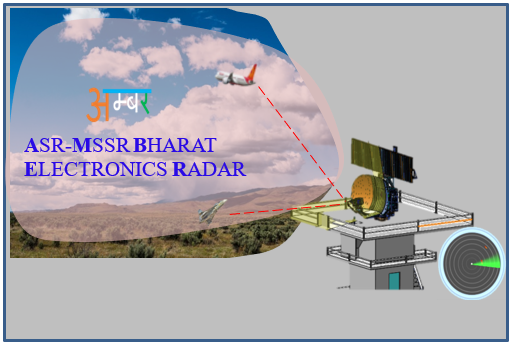
| Major Technical Specifications | |
|---|---|
| Radar Type: | 2D |
| Frequency Band | S Band |
| Max Detection Range | 60 NM for 2 sqm target |
| Azimuth Coverage | 360˚ in Rotation |
| Range Accuracy | 37 m (rms) |
| Resolution | 230 m |
| Capacity | 900 tracks/ Scan |
Special Features
- MSSR capable of Mode S level 2 upgradable to level 4.
- High antenna gain with very small antenna beam width
- Fully solid state and fail-soft, modular transmitter
- Low system noise figure
- Range / Azimuth programmable STC
- Adaptive antenna beam switching (between main and auxiliary), for improved ground clutter suppression
- Weather Processing and presentation as per NWS standards.
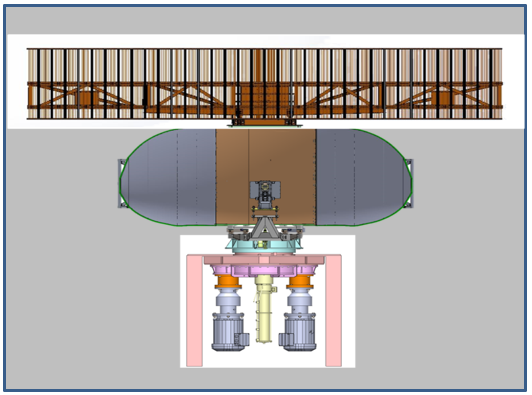
2. ATM Automation System and Advanced Surface Movement Guidance and Control System(ASMGCS)
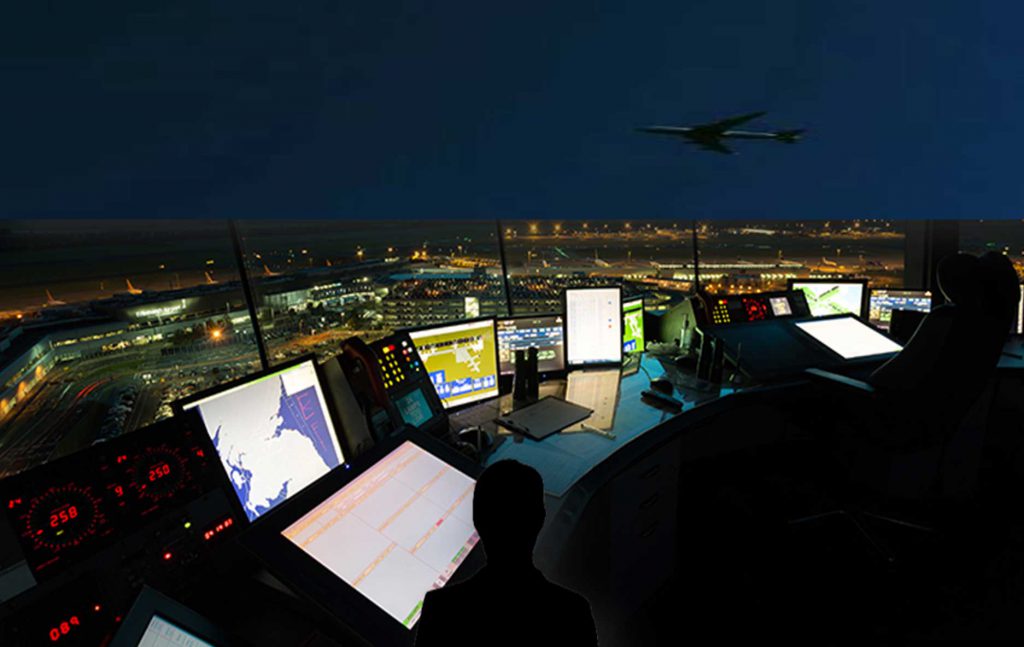
- Providing guidance, surveillance and Control Support to the Air Traffic Controller
- Maintaining aircraft movement rate under all local weather conditions
- Improving the safety in airport traffic especially during low visibility and night operations
- Reducing taxiing times and scheduling more efficiently.
- Conflict free continuous taxiing
Air Traffic Management (ATM) provides automated assistance to ATC personnel by performing following Main functions:
- Acquisition, Collection, Processing, Integration, Distribution and Presentation of Multi-Sensor Surveillance data, Flight Plan data, and Meteorological and Aeronautical information.
- Data exchange with Adjacent ATS units, Aircraft on-board system, and other internal and external systems and agencies
- Alert capabilities through flight monitoring and prediction functions
- Technical Monitoring and Control of the system, and management of operational parameters and environmental data.
- Recording of surveillance and flight data, meteorological and aeronautical information and user inputs for subsequent playback and analysis purposes
3. Indigenous ATC Radar
BEL indigenously developed Airport Surveillance Radar (ASR) is a S Band Radar (2.7 to 2.9 GHz) co-mounted with L band Monopulse Secondary Surveillance Radar (MSSR) for seamless Air Traffic Control application with detectable range of 60 NM (ASR)/250 NM (MSSR) in 360 deg Azimuth.

| Major Technical Specifications | |
|---|---|
| Radar Type: | 2D |
| Frequency Band | S Band |
| Max Detection Range | 60 NM for 2 sqm target |
| Azimuth Coverage | 360˚ in Rotation |
| Range Accuracy | 37 m (rms) |
| Resolution | 230 m |
| Capacity | 900 tracks/ Scan |
Special Features
- MSSR capable of Mode S level 2 upgradable to level 4
- High antenna gain with very small antenna beam width
- Fully solid state and fail-soft, modular transmitter
- Low system noise figure
- Range / Azimuth programmable STC
- Adaptive antenna beam switching (between main and auxiliary), for improved ground clutter suppression
- Weather Processing and presentation as per NWS standards.
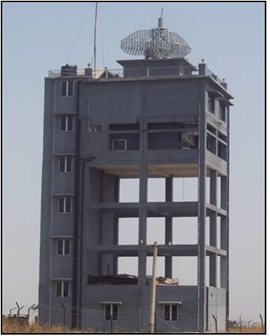
4. MLAT SYSTEM
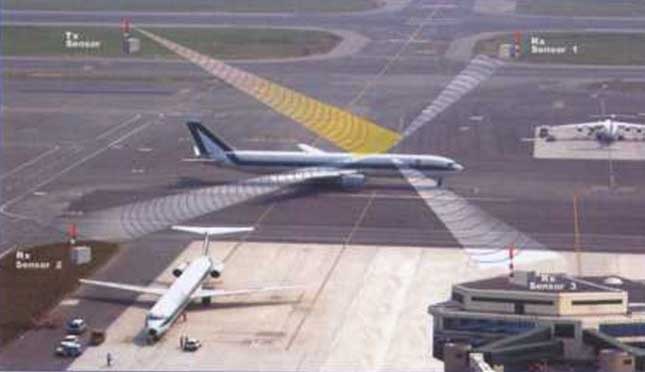
MLAT (Multilateration) is a cooperative system for targets surveillance and identification in airport environment. MLAT system uses differential Multilateration techniques or Time Difference of Arrival (TDOA) principle, in order to estimate the exact position of targets having Mode-S and Mode 3/A & C transponders. Targets identification is also possible by means of ground station interrogation.
5. ADSB SYSTEM
Automatic Dependent Surveillance—Broadcast (ADS–B) is a surveillance technology in which an aircraft determines its position via satellite navigation and periodically broadcasts it, enabling it to be tracked. The information can be received by Air Traffic Control (ATC) ground stations as a replacement for secondary surveillance radar, as no interrogation signal is needed from the ground. It can also be received by other aircraft to provide situational awareness and allow self-separation.
ADSB is a Next Generation technology for Air Traffic Management, which requires no transmission provides 360deg coverage. ADS–B is “automatic” in that it requires no pilot or external input. It is “dependent” in that it depends on data from the aircraft’s navigation system.

Special Features
- Modular Design approach
- Dual Redundant system
- Configure to Internal GNSS with IRNSS-L5 Receiver
- Range: 450 Km with Active Antenna
- Processing Capability: DF17 & DF18
- 300 ADSB targets at any time
- 3000 Mode S squitter's per sec
- The algorithm is based on short and extended squitter elaboration and on elicited replies elaboration
- In particular the system is capable to manage
- Mode-S Short Squitter (DF11) and Mode-S ADS-B Extended Squitter (DF17)
- Elicited Mode-S replies (Downlink Format 4, 5, 20 and 21) due to selective interrogations
- Elicited ADS-B Extended Squitter/Non Transponder replies (Downlink Format 18) sent by Ground vehicles/equipments
